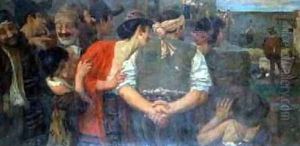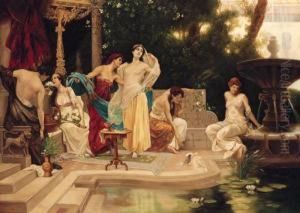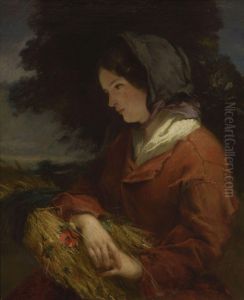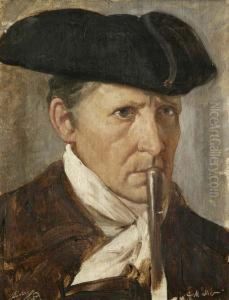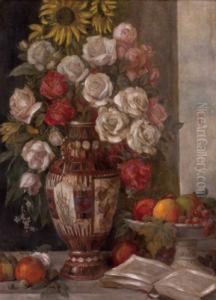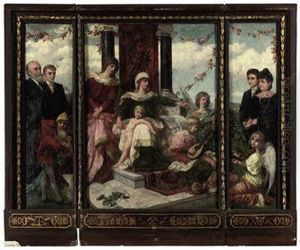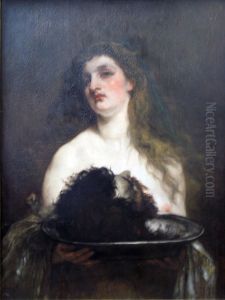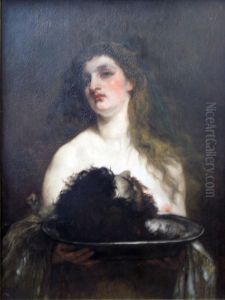Victor Muller Paintings
Victor Muller was a 19th-century French painter and printmaker, born on December 21, 1830, in Mulhouse, which at the time was part of the French region of Alsace. He is recognized for his work in the Romantic style, a movement that emphasized emotion, individualism, and the glorification of nature and the past.
Muller's early life and education are not as well documented as those of some of his contemporaries. However, it is known that he moved to Paris to pursue his artistic training. He studied under Michel Martin Drolling, a painter of historical subjects, and later with Thomas Couture, who was known for his large-scale history paintings and was also the teacher of Édouard Manet.
During his career, Muller became known for his historical and mythological scenes, which often featured a sense of drama and a rich use of color. His work was in line with the tastes of the period, which favored grand, narrative paintings with emotional depth. Muller's paintings often took inspiration from literature, mythology, and history, reflecting the Romantic interest in storytelling.
Victor Muller participated in the Paris Salon, an annual exhibition that was the official art exhibition of the Académie des Beaux-Arts in Paris. The Salon was the most significant art event of the time and being accepted into it was a mark of recognition and prestige for artists. Muller's works were exhibited several times, which helped to establish his reputation among the French art community.
Despite his success, Muller's life was marked by periods of difficulty, including financial struggles and health issues. His work, while respected, did not always translate into the financial stability that some of his peers achieved. Muller's health began to decline in the late 1860s, which affected his ability to produce art.
Tragically, Victor Muller's life was cut short when he passed away on November 29, 1871, at the age of 40. His death came during the tumultuous period following the Franco-Prussian War and the fall of the Second French Empire. Although Muller's work was appreciated during his lifetime, his early death meant that his career was relatively brief, and he did not have the opportunity to fully develop his legacy. Today, his works can be found in various museums, and he is remembered as a talented painter who contributed to the rich tapestry of 19th-century French art.
